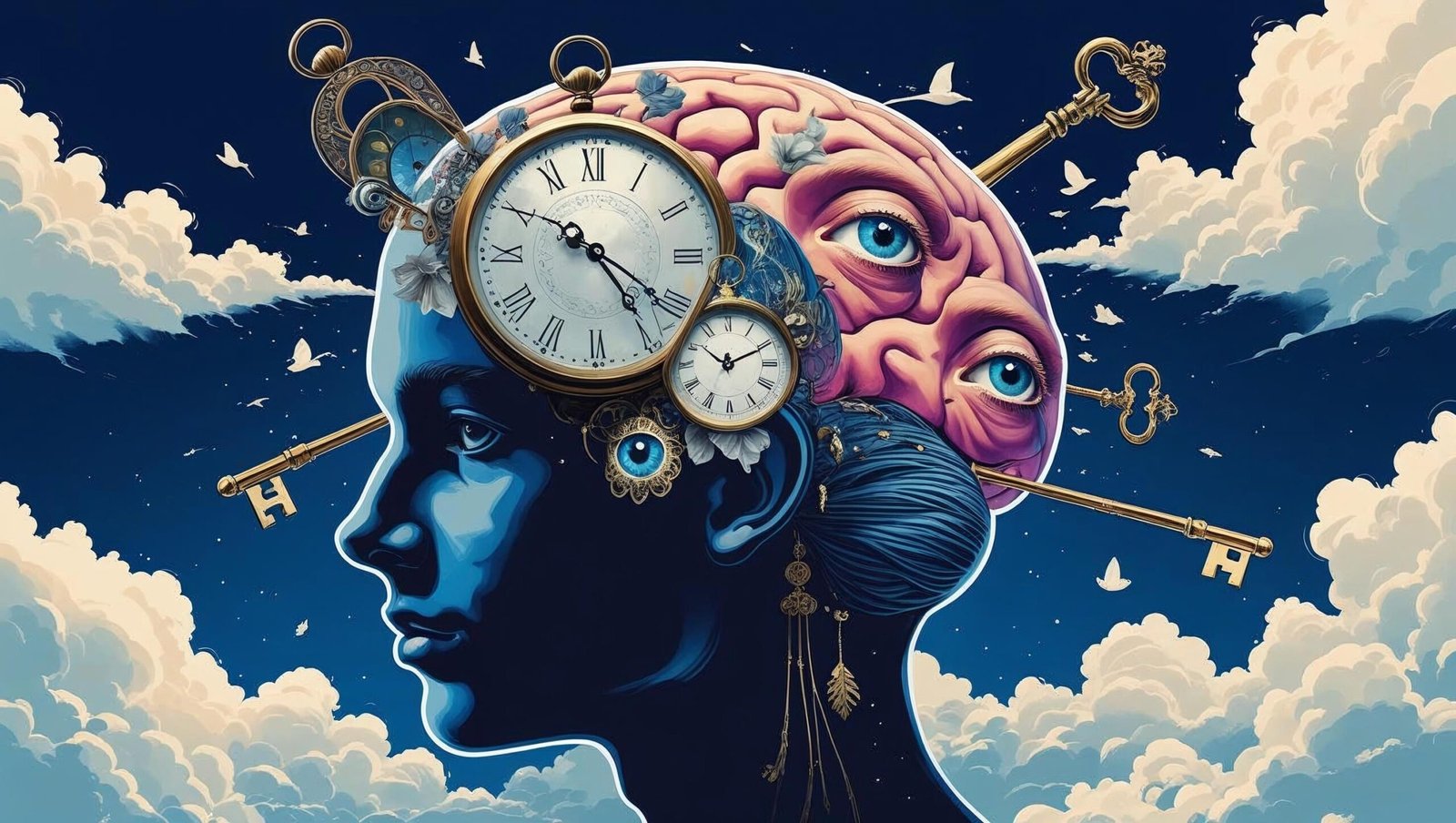Unlocking the Unconscious: A Comprehensive Review of Freud’s The Interpretation of Dreams
Introduction
In the annals of psychological literature, few works have wielded as profound an influence as Sigmund Freud’s The Interpretation of Dreams. Published at the dawn of the 20th century, this seminal text introduced revolutionary concepts about the human psyche, particularly the role of dreams as a window into the unconscious mind. Freud’s meticulous analysis and theoretical frameworks laid the foundation for psychoanalysis, forever altering our understanding of human behavior and mental processes.
This comprehensive review endeavors to dissect the core tenets of Freud’s magnum opus, exploring its historical context, methodological approaches, and enduring significance. By examining the intricacies of Freud’s arguments and the subsequent critiques and expansions of his theories, we aim to provide a thorough understanding of this pivotal work.
Freud’s Interpretation of Dreams remains one of the most influential psychological texts ever written, laying the foundation for psychoanalysis and redefining how we perceive the unconscious mind. Published in 1899 by Sigmund Freud, this groundbreaking work unveils the mysterious language of dreams and connects them directly to our deepest desires, fears, and unresolved emotions.

Historical Context and Genesis of the Work
At the time of writing The Interpretation of Dreams, Freud was a neurologist grappling with the limitations of contemporary medical explanations for psychological phenomena. Influenced by his work with Josef Breuer and the case of Anna O., Freud began to consider the unconscious mind’s role in mental health. This led to the development of psychoanalysis, with dream interpretation as a central component.
Freud’s own dreams served as primary material for his analyses, providing intimate insights into his psyche and the mechanisms he proposed. The book’s initial reception was tepid, but over time, it gained recognition for its innovative approach to understanding the human mind.
Core Concepts in The Interpretation of Dreams
1. The Unconscious Mind
Freud posited that the unconscious mind harbors desires and memories inaccessible to conscious awareness. Dreams, he argued, are manifestations of these repressed elements, offering a disguised fulfillment of unconscious wishes.
2. Manifest and Latent Content
A pivotal distinction in Freud’s theory is between the manifest content (the literal storyline of the dream) and the latent content (the hidden psychological meaning). He believed that the latent content could be uncovered through analysis, revealing the dreamer’s unconscious desires.
3. Dream Work Mechanisms
Freud identified several processes by which the unconscious mind transforms latent content into manifest content:
-
Condensation: Combining multiple ideas or images into a single element.
-
Displacement: Shifting emotional significance from one idea or object to another.
-
Symbolization: Representing abstract thoughts through concrete images.
-
Secondary Revision: Organizing the dream into a coherent narrative upon waking.
4. Wish Fulfillment
Central to Freud’s theory is the notion that dreams are expressions of wish fulfillment. He asserted that even dreams with negative or distressing content serve to fulfill unconscious desires, albeit in a disguised form.

Methodology: Free Association and Dream Analysis
Freud employed the technique of free association, encouraging patients to verbalize thoughts without censorship. This method aimed to bypass the conscious mind’s defenses, allowing access to the unconscious material influencing dreams. Through this process, Freud sought to interpret the latent content of dreams, uncovering the underlying wishes and conflicts.
Case Studies and Illustrative Examples
Freud’s text is rich with case studies, including analyses of his own dreams. One notable example is the “Irma’s Injection” dream, which Freud dissected to reveal his anxieties and desires related to his professional competence and personal relationships. These detailed examinations serve to illustrate the practical application of his theoretical constructs.
Impact on Psychology and Beyond
The Interpretation of Dreams not only revolutionized psychology but also permeated various cultural domains. Freud’s ideas influenced literature, art, and philosophy, prompting a reevaluation of human motivation and behavior. The concept of the unconscious mind became a cornerstone of psychological theory, inspiring subsequent schools of thought and therapeutic practices.
Critiques and Contemporary Perspectives
While Freud’s work was groundbreaking, it has faced criticism, particularly regarding its emphasis on sexual desires and the scientific validity of its claims. Modern psychology often favors empirical approaches, and some of Freud’s theories lack empirical support. Nonetheless, his contributions remain foundational, and contemporary research continues to explore and refine concepts related to the unconscious and dream analysis.

Unpacking Freud’s Interpretation of Dreams: Psychological Mechanisms and Theoretical Depth
Symbolism in Dreams
One of the most fascinating aspects of Freud’s Interpretation of Dreams is his exploration of symbolic representation. Freud argued that many dream elements—especially those related to taboo or repressed desires—are not expressed directly but are symbolized through objects, people, or scenarios. For instance, elongated objects might symbolize male genitalia, while boxes or enclosures may represent the female anatomy. While these symbols may appear strange or even absurd on the surface, Freud believed they held universal meanings shaped by our shared human psyche.
This symbolic vocabulary, though controversial, laid the groundwork for both classical psychoanalysis and modern dream interpretation. Freud asserted that the analyst must decipher the “dream language,” which is deliberately obfuscated by the dream work to protect the conscious mind from psychological distress. In other words, Freud’s Interpretation of Dreams reveals the mind’s elaborate system of censorship and disguise.
Wish Fulfillment
A central thesis in Freud’s Interpretation of Dreams is the idea that all dreams, at their core, are expressions of wish fulfillment. According to Freud, even nightmares or unpleasant dreams mask a hidden, unconscious desire. These wishes are often socially unacceptable or distressing, prompting the unconscious mind to distort them through dream mechanisms.
He wrote, “The dream is the (disguised) fulfillment of a (suppressed or repressed) wish.” This notion forms a cornerstone of Freudian analysis. It positions the dream not as a meaningless hallucination, but as a significant, meaningful act of psychic self-expression. Freud believed that even the most mundane or bizarre dreams are rich with insight into the dreamer’s emotional conflicts and hidden motives.
Day Residue and Unconscious Material
Freud emphasized that the content of dreams often includes what he termed “day residue”—fragments of the previous day’s experiences. These fragments are not randomly chosen. Rather, they act as triggers or screens through which deeper unconscious material is projected. Thus, a trivial incident from one’s waking life could serve as a surface layer masking repressed content.
In Freud’s Interpretation of Dreams, he argues that the conscious and unconscious minds collaborate in curious and complex ways. While recent events may serve as the raw material, the dream’s meaning is embedded in deeper layers of memory and conflict. This interplay is where the power of psychoanalytic interpretation lies.
Freud’s Own Dreams: A Case Study in Subjectivity
One of the unique features of Freud’s Interpretation of Dreams is Freud’s use of his own dreams as case studies. He included extensive self-analysis, most famously the “Dream of Irma’s Injection.” In this dream, Freud tried to absolve himself of guilt over a patient’s illness. Through interpretation, he discovered layers of professional insecurity, unresolved tensions, and personal ambition embedded in the dream’s narrative.
By presenting his own dreams, Freud set an example for introspective honesty and methodological transparency. He showed that even the interpreter is subject to unconscious forces—and that psychoanalysis must begin with the self. This willingness to expose his inner psyche added both credibility and controversy to his work.

Scientific and Philosophical Critiques
Despite the monumental impact of Freud’s Interpretation of Dreams, the book has not escaped criticism. Some scholars argue that Freud’s theories lack empirical rigor. His interpretations are often seen as too subjective, relying heavily on speculation rather than measurable data.
Philosophers of science, such as Karl Popper, criticized Freudian psychoanalysis for its lack of falsifiability. If any dream can be interpreted in a way that confirms Freud’s theory, then the theory cannot be scientifically tested or disproven. Others, such as Ernest Gellner and Michel Foucault, questioned the cultural and ideological assumptions underpinning Freudian thought.
Still, the staying power of Freud’s Interpretation of Dreams lies in its narrative depth and psychological resonance. Even if one disagrees with Freud’s conclusions, the richness of his insights into human behavior, guilt, desire, and repression remains compelling.
The Legacy of Freud’s Interpretation of Dreams
The publication of Freud’s Interpretation of Dreams in 1899 (officially dated 1900) marked a paradigm shift in the field of psychology. It inaugurated the era of depth psychology and laid the foundation for psychoanalysis. For decades, Freud’s ideas dominated psychiatric practice, literature, art, and philosophy.
Though later theorists such as Carl Jung, Alfred Adler, and Jacques Lacan diverged from Freud’s teachings, they all acknowledged the book’s significance. Jung, in particular, developed his own system of dream analysis that moved away from Freud’s strict wish-fulfillment model and toward the idea of archetypes and collective unconscious.
In literature and the arts, the concept of dreams as vehicles for unconscious expression inspired movements such as surrealism and expressionism. Salvador Dalí, André Breton, and others explicitly credited Freud’s dream theory as a source of artistic inspiration.
Relevance of Freud’s Interpretation of Dreams in Modern Psychology
While modern cognitive neuroscience has offered alternative explanations for dreaming—such as memory consolidation, emotional regulation, and random neural firing—Freud’s Interpretation of Dreams remains an essential text for psychotherapists and students of psychology.
Many modern therapists continue to use dream analysis, albeit with more flexible frameworks. Freud’s insistence that dreams are meaningful and tied to the emotional life of the dreamer remains a valuable insight. Today, therapists may integrate Freudian methods with cognitive-behavioral therapy (CBT), gestalt therapy, and Jungian analysis, offering a more eclectic approach.
Moreover, the enduring popularity of Freud’s Interpretation of Dreams in college curricula and bookshops suggests that Freud’s legacy continues to provoke, inspire, and educate.
Practical Applications: Using Freud’s Method for Self-Reflection
Even for lay readers, Freud’s Interpretation of Dreams offers tools for introspection and self-awareness. By keeping a dream journal and practicing free association, individuals can attempt to uncover the hidden meanings of their dreams. Freud’s techniques require patience, honesty, and a willingness to confront uncomfortable truths—but the rewards can be deeply illuminating.
Here’s a simplified process, inspired by Freud’s approach:
-
Record your dreams immediately upon waking.
-
Identify recurring symbols or themes.
-
Free associate with those symbols—write down anything that comes to mind.
-
Look for emotional patterns—what wishes or fears are being expressed?
-
Relate the dream content to recent events or internal conflicts.
While not everyone will agree with Freud’s conclusions, the process itself can promote greater self-understanding.

Freud’s Style and Literary Quality
One underappreciated feature of Freud’s Interpretation of Dreams is its literary quality. Though technical in places, the text is rich with metaphor, narrative flair, and philosophical insight. Freud combined clinical case studies, theoretical exposition, and personal anecdotes into a seamless whole. His writing, while dense, is never dry. It reflects the intellectual ferment of turn-of-the-century Vienna—a world of coffeehouse debates, artistic innovation, and burgeoning modernism.
In reading Freud’s Interpretation of Dreams, one is struck not only by the audacity of Freud’s ideas but also by the elegance with which he presents them. His prose invites the reader into a journey—one that winds through the labyrinth of the unconscious with both rigor and imagination.
1. Cultural Impact of Freud’s Interpretation of Dreams
Freud’s Interpretation of Dreams sparked a cultural revolution that extended beyond psychology. It influenced art, literature, and cinema, shaping modern thought about the unconscious. Writers like Kafka and surrealist artists drew upon Freud’s dream theory to enrich their work. This interdisciplinary impact showcases the lasting legacy of Freud’s Interpretation of Dreams in shaping how society views human emotion, repression, and the symbolic nature of the mind.
2. Freud’s Interpretation of Dreams in Therapy Today
In modern psychotherapy, Freud’s Interpretation of Dreams still serves as a foundational text. While newer modalities have emerged, therapists frequently refer to Freudian concepts when analyzing dream material. Dreams are still used to explore unresolved emotions and inner conflicts. Freud’s emphasis on symbolism and wish fulfillment continues to guide practitioners. This highlights the timeless relevance of Freud’s Interpretation of Dreams in helping clients access deeper psychological insights.
3. Criticisms Faced by Freud’s Interpretation of Dreams
Despite its influence, Freud’s Interpretation of Dreams has faced criticism from scientific and philosophical communities. Some argue that the theory lacks empirical support and is overly speculative. Others believe Freud projected too much personal bias onto his case studies. Still, the text remains a milestone in psychological literature. Even its critics acknowledge that Freud’s Interpretation of Dreams opened important conversations about the unconscious that remain relevant today.
4. Why Freud’s Interpretation of Dreams Still Matters
Over a century since its publication, Freud’s Interpretation of Dreams continues to matter. In a world driven by external distractions, understanding our internal emotional life is more crucial than ever. Freud’s work encourages introspection, self-awareness, and emotional healing. By decoding the symbolic language of dreams, readers gain tools to explore unresolved thoughts. Freud’s Interpretation of Dreams thus remains an essential guide to uncovering the hidden truths of the psyche.
FAQs About Freud’s Interpretation of Dreams
Q1: What is the main idea of Freud’s Interpretation of Dreams?
The central idea is that dreams are disguised fulfillments of repressed wishes. Freud argued that by analyzing dreams, one could access unconscious thoughts and desires.
Q2: Why is Freud’s Interpretation of Dreams considered important?
It introduced the revolutionary idea that dreams are meaningful expressions of the unconscious mind. It laid the foundation for psychoanalysis and changed the way we understand mental life.
Q3: What techniques did Freud use to interpret dreams?
Freud used methods such as free association, analysis of dream symbols, and exploration of latent vs. manifest content to uncover hidden meanings.
Q4: Can Freud’s dream theory be applied today?
Yes. Many therapists still find value in dream analysis, especially for understanding emotional conflicts, even though modern theories have expanded upon Freud’s original ideas.
Q5: Was Freud the first to study dreams?
No, but he was the first to systematically connect dreams to unconscious mental processes using clinical methods, making his work foundational in modern psychology.
Conclusion
Freud’s Interpretation of Dreams is not merely a psychological manual—it is a voyage into the hidden dimensions of the human mind. With profound philosophical and clinical insights, Freud challenged the prevailing notions of consciousness, morality, and identity. While subsequent developments in psychology have critiqued and expanded upon his work, the significance of his contributions cannot be overstated.
By daring to suggest that our nightly visions were not trivial, but meaningful, Freud’s Interpretation of Dreams forever changed the course of intellectual history. Whether you are a scholar, a therapist, or a curious reader, this book offers a profound lens through which to explore the mysterious terrain of the self.
Read More Insightful Reviews and Essays at
“To understand one’s dreams is to begin the journey of understanding oneself.”
— Shubhanshu Shekhar, Founder of shubhanshuinsights.com
7 Profound Lessons from The Tipping Point by Malcolm Gladwell: A Complete Review2 Transform Your Life Positively with Change Your Brain Every Day by Dr. Daniel G. Amen1 Don’t Sweat the Small Stuff Book Review – Uplifting Lessons from Richard Carlson on Living a Stress-Free Life” 1 Think and Grow Rich by Napoleon Hill – A Definitive Blueprint for Success”